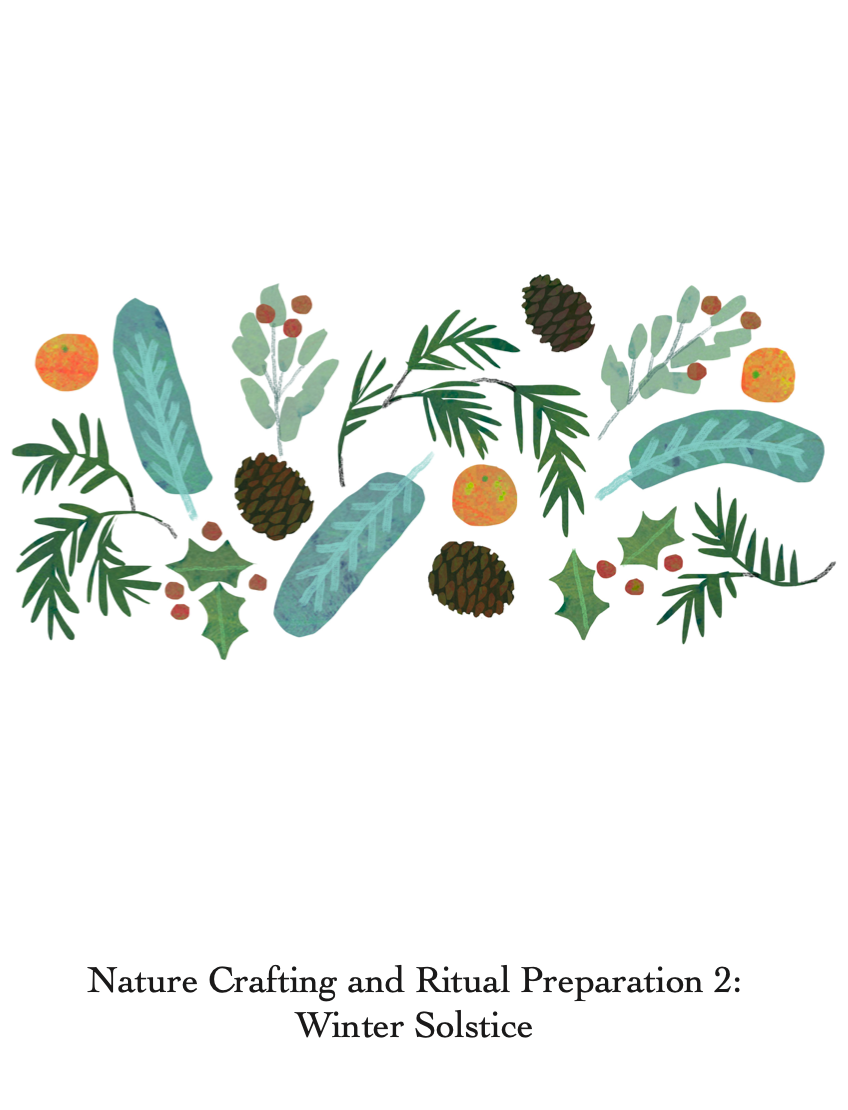A Joyful Path, Year Three – Week 15: Winter Nature Crafting And Ritual Preparation
For Classroom or Home School

Week 15: Winter / Element: Air / Wind
Nature Crafting and Ritual Preparation 2: Winter Solstice
This session happens approximately one class before the Winter Solstice.
Four times during A Joyful Path, Year 3, the lesson plans pause for two back-to-back sessions: Nature Crafting and a Ritual Celebration to honor the gifts of the season at hand. The Nature Crafting session provides ways for the children to learn about, and get ready for, the pending holiday as well as to honor the respective gifts of four elements: earth, air, water and fire. The intention is to generate excitement and genuine anticipation for the upcoming ceremony and celebration. The Ritual Celebration offers a simple liturgy to co-create with the children, and your greater community, if desired. The Ritual Celebrations happen at the following times:
Dates for the Northern Hemisphere:
-
- Autumnal (Fall) Equinox (September 19-22, date varies)
- Winter Solstice (December 20-22, date varies)
- Vernal (Spring) Equinox (March 19-22, date
varies) - Summer Solstice (June 20-22, date varies)
Dates for the Southern Hemisphere:
- Autumnal (Fall) Equinox (March 19-22, date varies)
- Winter Solstice (June 20-22, date varies)
- Vernal (Spring) Equinox (September 19-22,
date varies) - Summer Solstice (December 19-22, datevaries)
What is the Winter Solstice?
The Northern and Southern Hemispheres experience the seasons in polar opposition, and the exact dates of the Equinox and Solstice fluctuate. You may wish to look up the exact date for your year. In December, the Sun reaches its southernmost position in the sky, enveloping the
Northern hemisphere in colder darkness (Winter), and drenching the Southern hemisphere in warm light (Summer). This impeccable design is part of the brilliant and wonderful Holy Mystery we call by many names (G-d, Allah, Big Bang and many more).
Indoor lighting, heat, air conditioning and other technology buffers most of us from the extremes of either Solstice. And yet, it is important (spiritually, physically and psychologically) that we notice the incremental changes that are taking place. Notice the changing light and temperature, and the changing behaviors of the plants, trees and animals.
Honoring, celebrating and thanking Earth for Her seasons and cycles began with the earliest humans. Ancient Earth-centered rituals did this so well that most of our present day celebrations can be traced back to Indigenous or pagan practices.
Preparation for Nature-crafting & Winter Solstice Ritual Celebration:
* Globe, beach ball or other ball
* A table, other surface or box to create an altar (this can be the same space you have used for previous altars)
* You will also want an altar cloth (Winter- colored scarves or cloth napkins work well), and other items like: pinecones, evergreen boughs, red berries, Holly, Ivy, and Mistletoe and oranges (to represent the sun). If you are living in a different ecosystem (coastal, desert), then create an altar that matches your locality in this season.
* Bowls of winter nuts, peppermints, or festive candies, etc
* Bells (in this season, their sounds represent the driving away of negative energy)
* One completed smudge stick (see below), matches or lighter, and small cup, plate or shell to catch any ash from the burning stick.
And to make the smudge sticks, you will need enough of the following for each child:
* Scissors or garden clippers
* Cotton string (four to five feet per child)
* Sprigs of local greenery – Pine, Juniper, Cedar, Fir, Balsam, and/or Rosemary. NOTE: certain kinds of Fir tend to dry and break making the needles less easy to work with than varieties that have longer, softer needles. Depending on how much time you will have in class, you may bring pre-cut sprigs for the children, or bring larger boughs and provide scissors for the children to cut their own. If you harvest your own, harvest the sprigs and branches from the ground. Remember to ask and thank the tree or plant before harvesting anything that is still part of the living being.
Be sure to click here to download the Teaching Introduction and Instructions.

